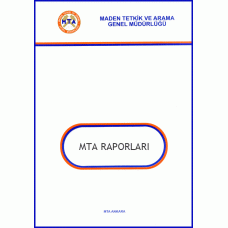Summary
This is the research and development concerning the application of the remote sensing technology on the mineral resources exploration in the Trabzon Area in cooperation with Maden Tetkik ve Arama Genel Müdürlüğü (MTA), Ministry of Natural Resources, the Republic of Turkey.
Information which is related to the resource exploration obtained from the satellite data includes geomorphologic information, spectral information and information on heat property of the ground surface. This study aimed at developing the method of lithologic classification -especially those by means of the Digital Terrain Model (DTM)- and the analytical method of geologic structure using geomorphologic information because the study area was extensively covered by vegetation.
More than ninety massive sulfide deposits including stockwork deposits occur in acid volcanic lavas and pyroclastic rocks of the late Cretaceous to the early Eocene Epoch in the study area. These massive sulfide deposits are assumed to be similar to the Kuroko Deposit of Japan except the age of formation. It is effective to analyze fracture patterns which were accompanied by the volcanic subsidence and submarine volcanic activity for the remote sensing application on the exploration of massive sulfide deposits. It is assumed that geomorphologic method using DTM is applicable for such structural analysis. It is also assumed that the difference of erosion can be figured out from the difference of denudation calculated by the DTM because the degrees of regional alteration are different from stratum (rock) to stratum (rock) in the study area.
The major themes this phase were to make the photogeological interpretation on the image and to develop and to evaluate the extraction method of distinctive geomorphologic properties by DTM. As a result of this study, it became clear that most of the volcanic rocks of the late Cretaceous to the Palaeocene Period by which massive sulfide deposits were hosted were distributed along the coast of the Black Sea. It was also proved that lineaments of the NW-SE, E-W and NNE-SSW systems were dominant in such area. Especially, two kinds of structures as the lineaments of the NW-SE system and annular structures were frequently extracted near the known ore deposits. The place of mineralization might be characterized by such two kinds of structures. The lineament extraction using shadow information was proved to be effective in the geomorphologic analysis by DTM. Drainage anomalies were extracted and the development history of landform was presumed in the drainage system analysis.
Moreover, relief information such as valley line which was specially paid attention in the interpretation on images was expressed as denudation, and the possibility of lithologic classification by the denudation was examined in this study.
| Rapor Özellikleri | |
| Rapor No | 10482 |
| Rapor Adı | REPORT ON THE JOINT REMOTE SENSING STUDY IN THE TRABZON AREA, THE REPUBLIC OF TURKEY |
| Konu | JEOLOJİ |
| Yer - Konum | TRABZON |
| Dil | İNGİLİZCE |
| Yayın Tarihi | 01.11.2001 |
| Hazırlayan Birim | JEOLOJİ ETÜTLERİ DAİRESİ BAŞKANLIĞI |
| Yazarlar | TEMEL TOPÇU TESUO SATO TOMOJİ SANGA ÜNAL AKMAN YASUYUKİ YAMASHITA |
REPORT ON THE JOINT REMOTE SENSING STUDY IN THE TRABZON AREA, THE REPUBLIC OF TURKEY
- Markalar MTA
- Ürün Kodu: DR10482
- Stok Durumu: Stokta var
-
836,99TL

